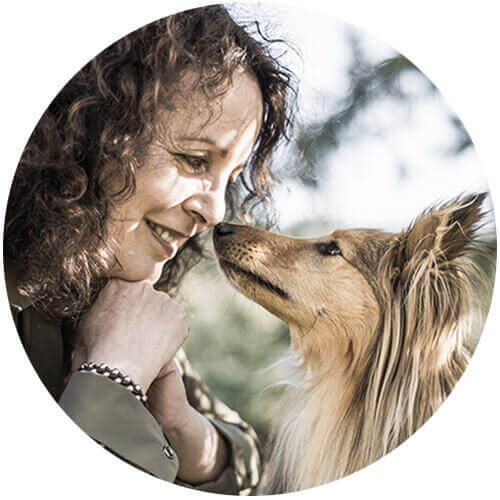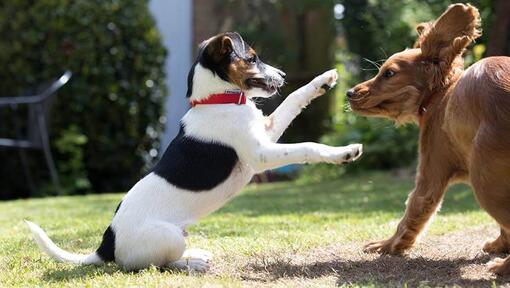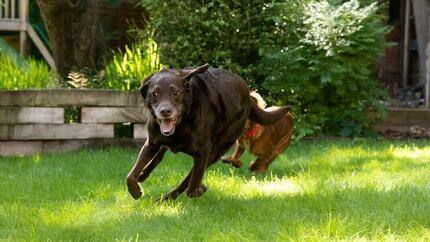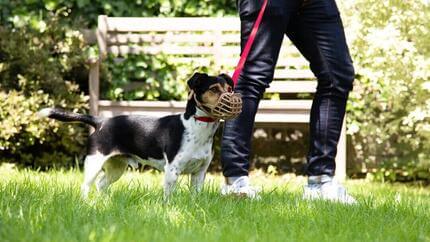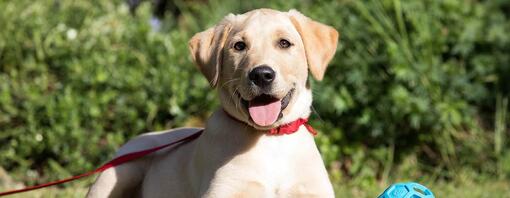
We’ve heard a lot about ‘lockdown puppies’ - dogs that have been bought during the pandemic when people have been at home rather than out at work - but amazingly pet adoption has increased ever since the pandemic started.
We’ve put together this guide to dog walking etiquette to teach you the basics on safe dog walking to keep everyone happy when out on their adventures.
“Don’t worry, he’s friendly!”
One of the main complaints is about people who let their dogs bound over to other dogs - who may be on the lead or walking quietly beside their owner - usually with some out-of-control person shouting after them “don’t worry, he’s friendly”! And somehow if your dog doesn’t welcome this sudden and unexpected interruption, it’s you and your dog that is labelled at fault!
It’s very easy for new (and even experienced) owners to assume their dog is ‘aggressive’ or ‘unfriendly’ when they respond in a negative way to these interactions, and even start to dread walk times, thinking that their dog is the one with the problem.
Why this happens is because many people have a lack of understanding of dogs, of how they interact, and also have some unrealistic expectations.
Every dog is different
Dogs are social animals. That’s why they make such great companions and why they enjoy playing with their doggy friends. In that way, they’re very like us. However also like us, they choose who they interact with and show play responses to. And again, like us, there are extroverts and introverts, social butterflies and loners - and everything in-between.
While we might like the dream of our dog having a great time with everyone they encounter out on a walk, this is totally unrealistic, and the dogs who love everyone and will play with every dog they meet without so much as a cross word, are very much in the minority.
Some dogs, due to their breed, type, history or individual personality, do not like other dogs at all and are far more human-oriented or independent.
Most dogs fall somewhere in the middle of this scale. They like their doggie friends who they have met and have been properly introduced to, and will have a great time playing or walking with them, but have little interest in interacting with strange dogs.
And yet again, they are a lot like us. We love our friends and families but treat strangers trying to be over-friendly with anything from suspicion to fear and annoyance (especially if they are persistent!).
A matter of socialisation
Ah but what about socialisation? Once again, there is a lack of understanding here. The idea of dog socialisation isn’t to make them love every single dog they meet - and that they have somehow ‘failed’ if that isn’t the case. The idea of socialisation is that your dog is comfortable, happy and knows how to behave appropriately around other dogs. Also, that they can learn how to listen to you when there are other dogs around while also learning the social skills they need to be able to interact and make friends if they choose. It also teaches you more about your own dog’s sociability, comfort levels, and how to handle them and keep their focus around others.
Bounding over to other dogs
One of the other misconceptions is that the dogs that bound over to all others are the well-socialised, well-adjusted, well-trained ones. And that couldn’t be further from the truth. In most cases, these are the under-socialised ones that have no idea about dog walking etiquette or appropriate social interactions, and are in fact, quite rude! These are often the dogs who start arguments or fights, as while friendly, enthusiastic and desperate to interact or play, their pushiness and lack of social skills leads them to getting told off by others - which of course can easily escalate.
6 top tips for good dog walking etiquette
Here’s our top six tips for teaching good dog walking etiquette that you should practice when venturing out with your dog:
- Socialise your dog or puppy
Attend a good, accredited puppy or dog training class that focuses on teaching how to work around other dogs, and isn’t all about free-for-all off-lead play and charging around. While there should be some opportunity to interact and play, this should be a small part of the class and done in pairs or small well-matched groups. This way your dog learns that they don’t get to play with every dog they see all the time - and that they listen to you no matter who else is around.
- Teach a good recall
Even if you don’t practice any other training at all with your dog, work on having a good recall, this is an absolute must for safe dog walking.
- Teach them to focus on you
If you have one of those dogs who loves everyone, work even harder on your training and teach them to be able to focus on you around other dogs. Often these are the dogs who love other dogs so much, they totally ignore their owner as other dogs are a lot more fun, so you have even more of a training challenge than with those dogs who are less keen to interact.
- Never let your dog run up to another dog on the lead
When you are out walking your dog, don’t let them dash up to other dogs - especially if they are on a lead. Dogs are on the lead for a reason. Maybe they don’t like other dogs. Maybe they are scared of other dogs. Maybe they are in training. Maybe they are recovering from an operation. It doesn’t matter the reason, it’s good dog walking etiquette to let that dog and their owner choose who they interact with - and if they interact at all - and not have it forced on them by your out of control, rude (however friendly!) dog.
If you see an on-lead dog and your dog is off lead, call your dog back, give them a treat and put them on the lead until you have passed them. If you can’t do that, don’t have your dog off lead around others.
- Never let unknown dogs meet and interact on the lead
Dogs have very specific introduction behaviours that include sniffing, circling and approach/retreat. On lead, a dog can’t do any of these behaviours and that results in ‘fake body language’ which can lead to conflict, even in social dogs. If you are meeting a friend for a walk and your dogs don’t know each other, don’t aim for anything other than walking together in parallel, starting at a distance and moving closer as the dogs relax in each other’s company. Your dogs can see, smell and watch each other and get used to each other without any pressure to interact - and by watching your dog’s body language, you’ll get a good idea if they are going to be friends.
- Watch out for nervous or fearful dogs
While you are out and about, watch out in particular for yellow leads, harnesses, collars or bandanas. These are often used to indicate a dog is nervous or fearful of other dogs - or just doesn’t like them. Give them space.
Summer walks are a real joy of dog ownership - and with a little bit of canine understanding and dog walking etiquette, you can make sure everyone enjoys them.
Now you know all about dog walking etiquette and safe dog walking, why not read our guide on how to teach your dog to walk on a lead?
